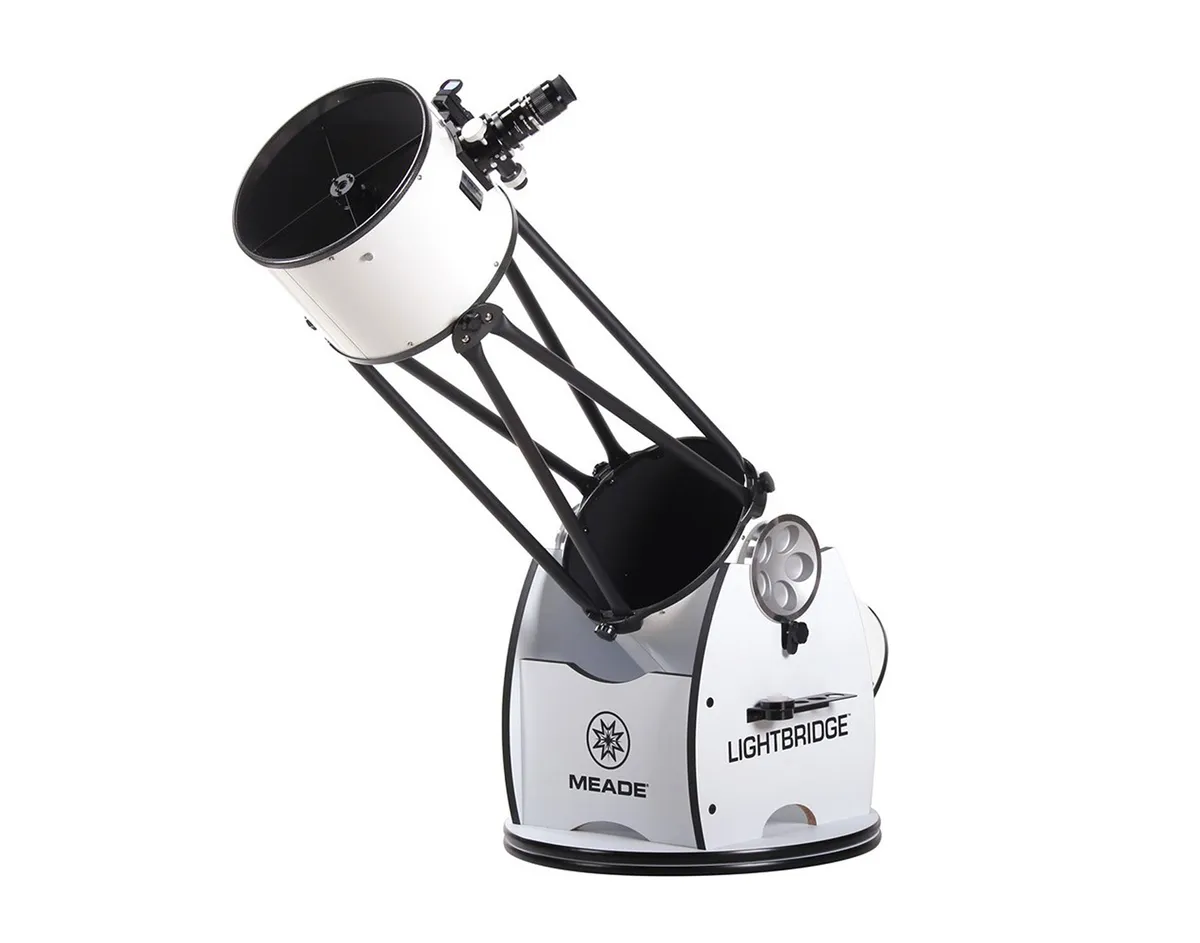Reflector or refractor? When choosing a telescope, at a basic level astronomers ultimately face one of two choices. The decision can be a tough one, but there are a few points to consider.
The largest aperture for your money will be a Newtonian reflector and as astronomy is all about capturing dim light, this is a serious consideration.
However, you should bear in mind that reflectors require regular collimation to ensure that you get the best out of them. For more on this, read out guide on how to collimate a Newtonian telescope.
A refractor, on the other hand, will remain collimated for years, making it an ideal grab-and-go telescope for those who like to travel to a local dark-sky site, or even further abroad.
That said, the collimation process for a reflector is quickly learnt and fast to implement at the start of an observing session.
Mounting any telescope on a wobbly unwieldy mount will soon make you lose interest, which is why a stable Dobsonian reflector is such a popular and recommended choice.
There is a well-known maxim in astronomical circles: “The best telescope is the one you use the most.”One that doesn’t produce inspiring views or is difficult to set up and operate will end up sitting unused in a corner pretty quickly.
If you are new to astronomy and are trying to decide what telescope you should buy, read our guide to the best telescopes for astronomy beginners.
Or, you could read our guide to choosing your first telescope, which provides details of what to consider when you've decided to fully invest in this wonderful hobby.
And elsewhere on our website you'll also find our full back catalogue of telescope reviews, which is updated on a regular basis.

Refractor vs reflector: pros and cons
BBC Sky at Night Magazine's Reviews Editor Paul Money weighs in on the refractor/reflector debate
Refractor or reflector? That is the question. Whether 'tis nobler to view the night sky unfettered by diffraction spikes or by going deeper enjoying spiky stars, it seems, can stir up strong opinions.
I could be accused of sitting on the fence, because I enjoy views through a reflector with its inherent spiky stars (have you ever wondered what diffraction spikes are?) due to the spider support of the secondary mirror, yet also enjoy the crisp pure view of stars as they really are when I set up one of my refractors.
It's a case of using what instrument is best for any given purpose, along with your own aesthetic tastes of course.
For going deep to view deep-sky fuzzies such as distant galaxies and galaxy clusters, I will automatically reach for one of my Newtonian reflectors, or perhaps my 180mm Maksutov if I want a longer focal length system.The latter is also better for any of my planetary or lunar viewing and imaging.

My short focal length 80mm apo refractor and mid-range 127mm achromat refractor also have different uses.
The smaller apo gives lovely wide field views suitable for larger targets such as the Andromeda Galaxy and sweeping along the star fields of the Milky Way. It is also good for imaging those targets too, so is a good multi-tasker.
The 127mm is a longer focal length and gives gorgeous views of many double and multiple stars and, for my money, stunning views of many of the open clusters scattered along the Milky Way.
And if all this talk of focal lengths is confusing you, read our guide: telescope stats explained.
In the end, if you can find the space (and finance) for a selection of equipment, then aim for a mix of refractors and reflectors and a good range of eyepieces and you should be set for life.Until the next new telescope comes out of course!
But if I do have one bug bear it's that refractors simply don't have spikes, so don't add them with image processing software. Instead enjoy the purity of the view.
Email Steve your astronomy queries to contactus@skyatnightmagazine.com and they could be answered in a future issue of BBC Sky at Night Magazine.

